May 4, 2015
Martha O'Kennon
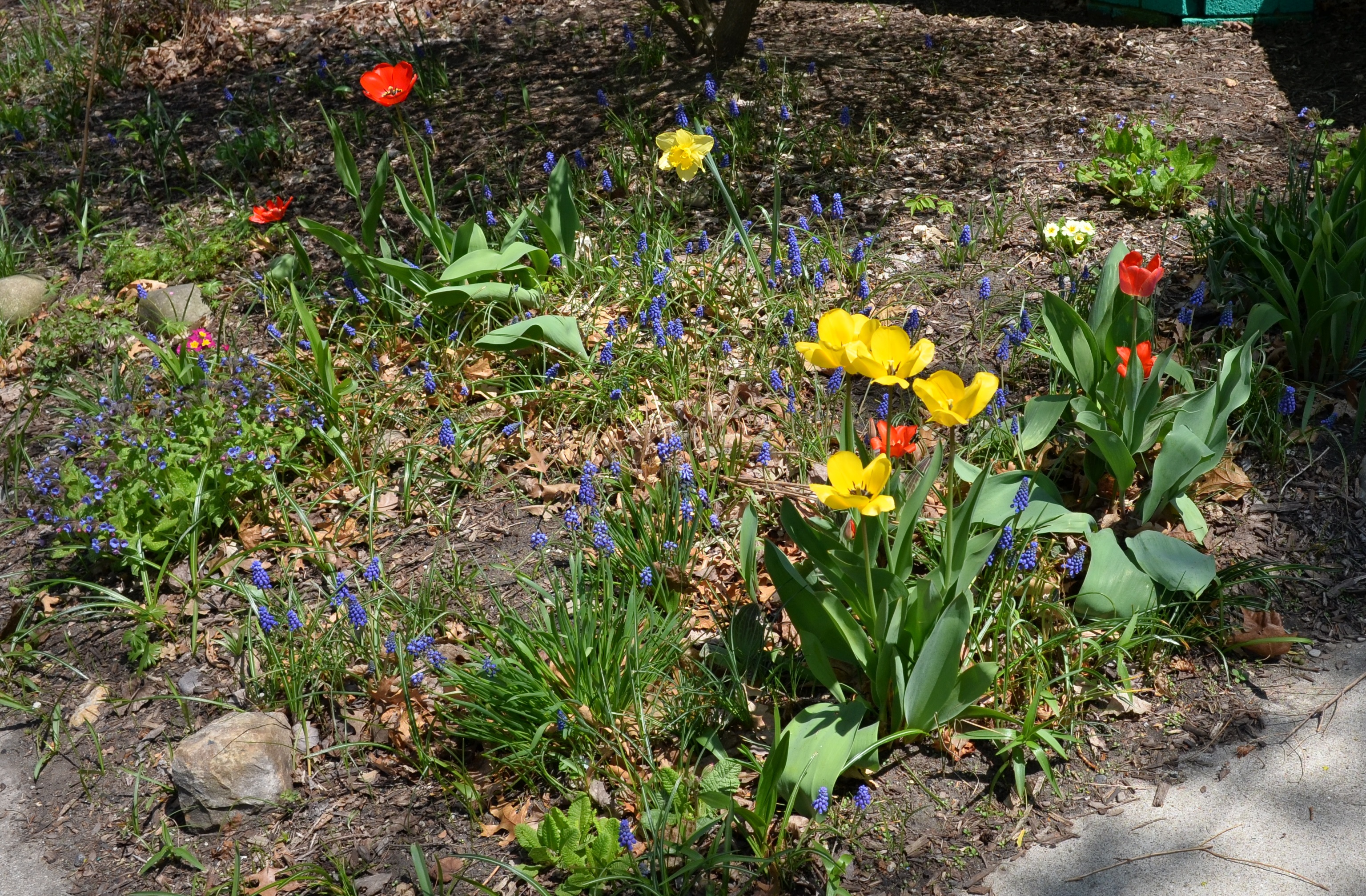
Spring comes on and on. The squirrels did a nice job of redecorating the front garden. I had planted my bulbs in little groups
as suggested by all the gardening magazines. They ate the ones that they knew would only uglify the yard and planted the rest
randomly and seem to have forgotten to eat them in the winter. The result: grape hyacinths spreading almost evenly through the bed.
The crocuses are long gone now but they appeared in the same aesthetic pattern.
Some flower portraits: red tulips, red riding hood tulip, and two kinds of primroses, the latter being purple "lace",
supposedly an "antique" variety.
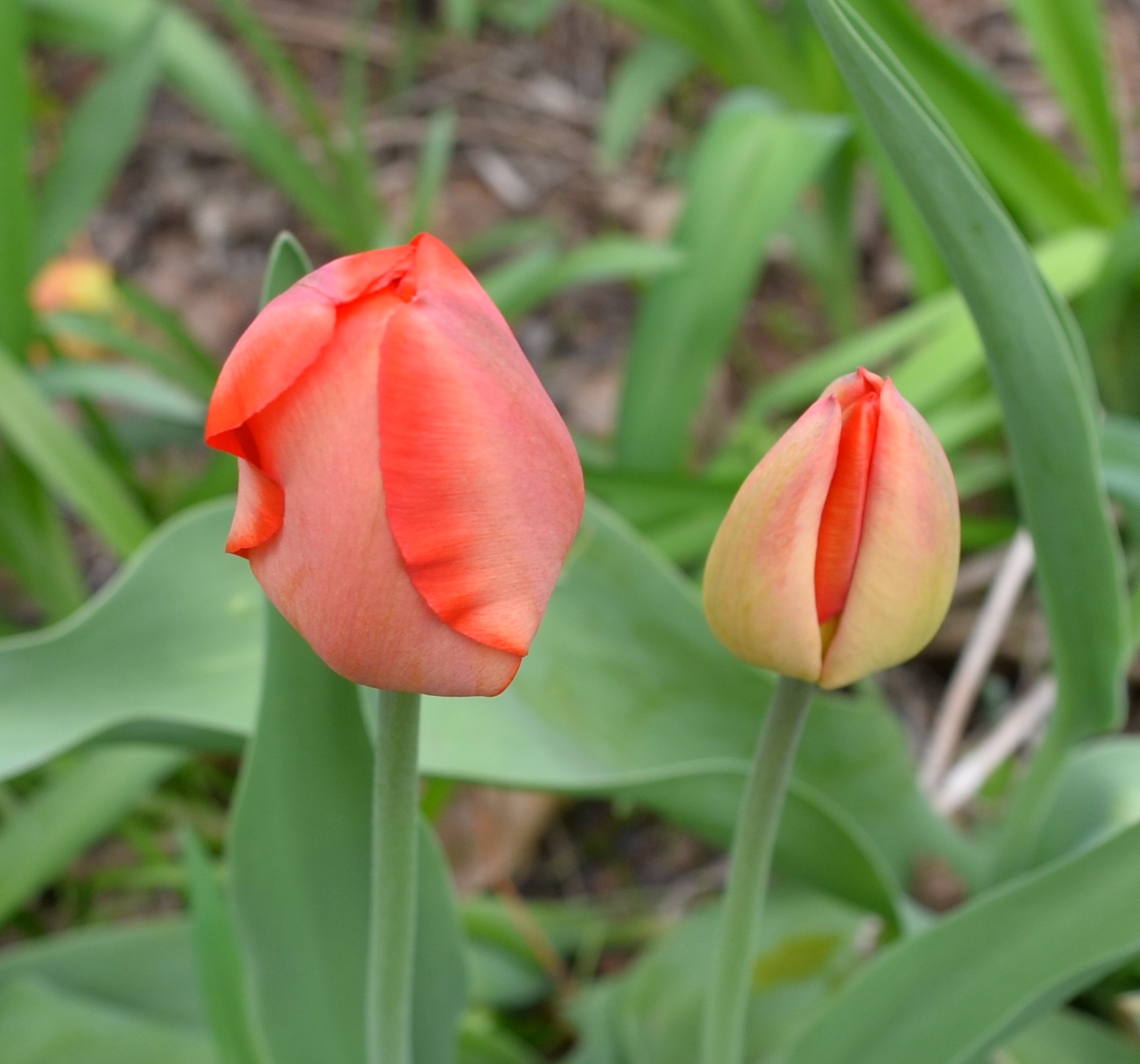
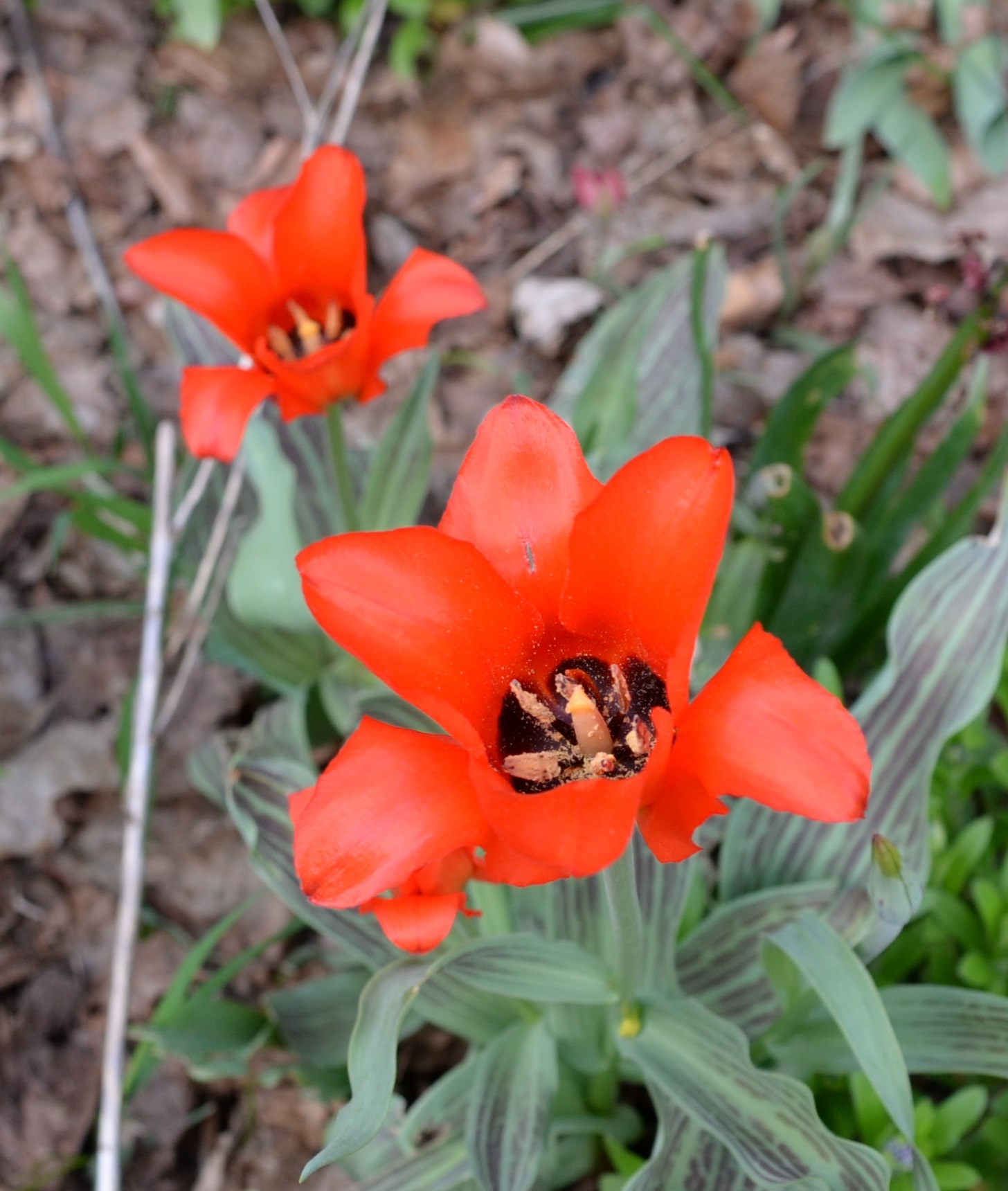
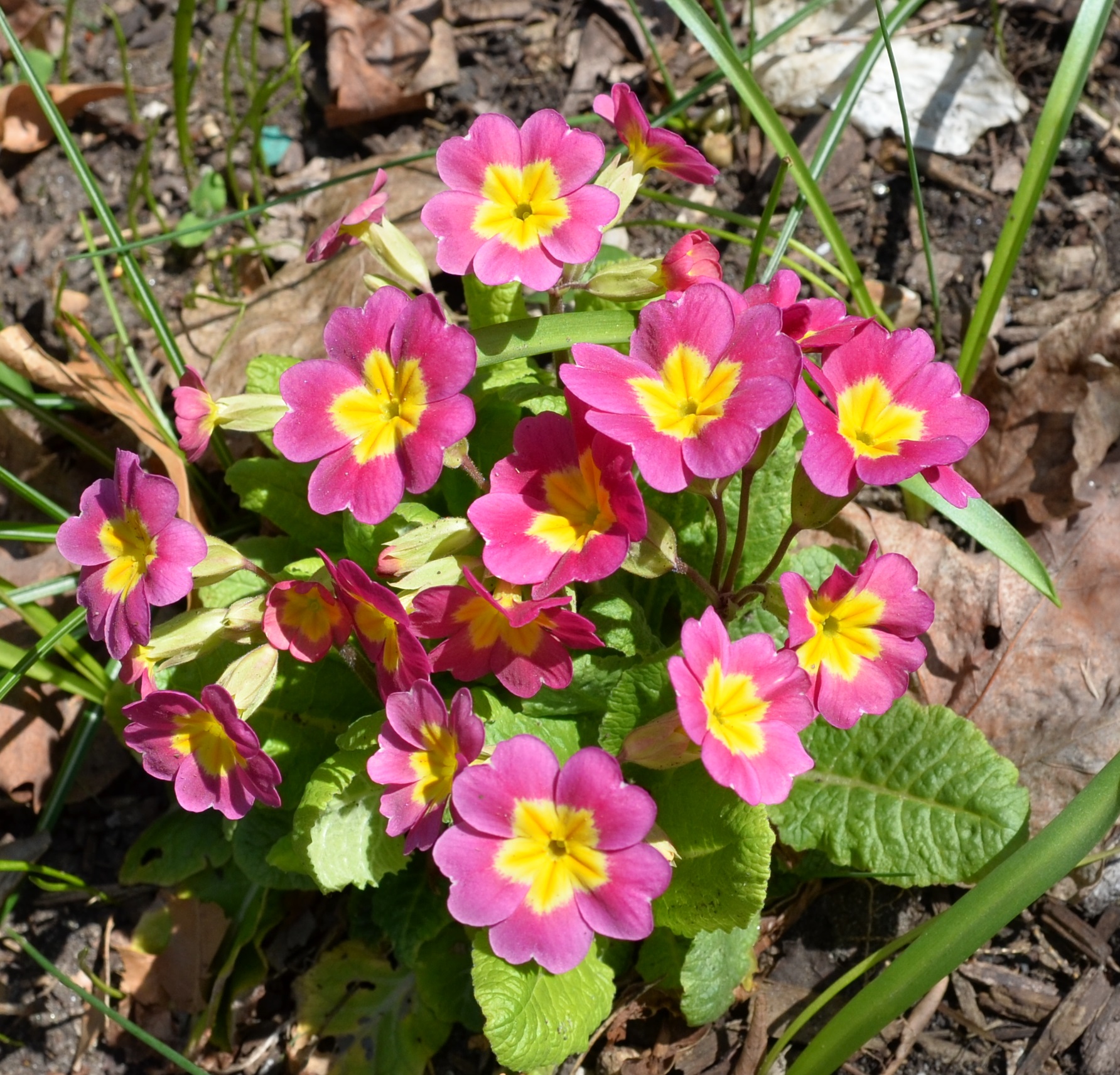
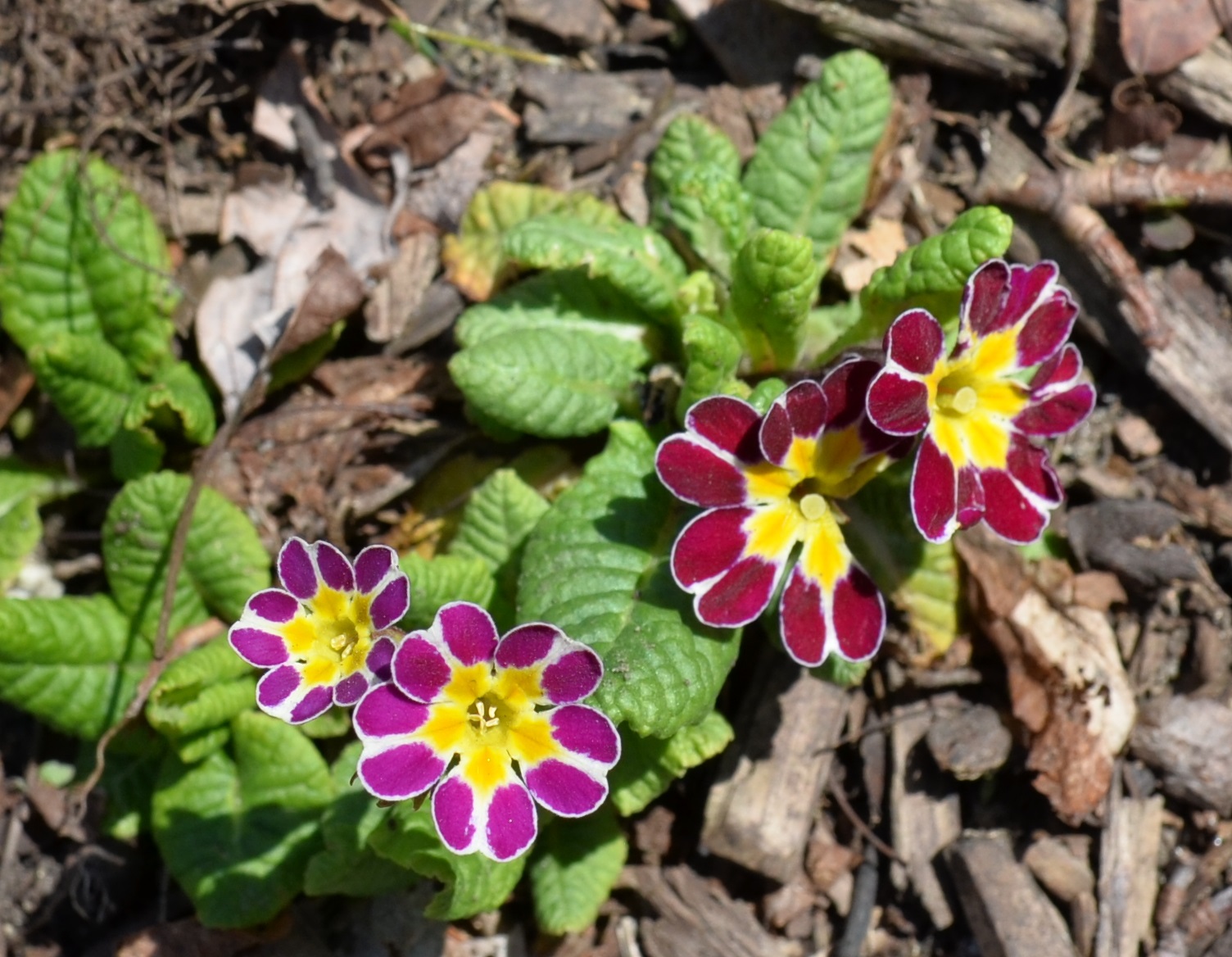
How about starting off with some stinky bugs? Actually I didn't notice an aroma about any of them! First off, an unidentified
little black bug, then two
true stink bugs, a small reddish-brown one and a glorious big green one (two views for all its glory), a flat bug (what? I never heard
of a flat bug unless someone just created one on the bottom of his boot), and another kind of bug, all related to the good old stinkbug.
The flat bug gives itself away by its fat antennae. Another strange bug, identified as Agallia nymph, actually a kind of
leafhopper. And finally our friendly assassin, bug that is,
with what I think are little wings just starting to show up - they grow up so fast, don't they? I inked in some arrows to the
possible little wingies.

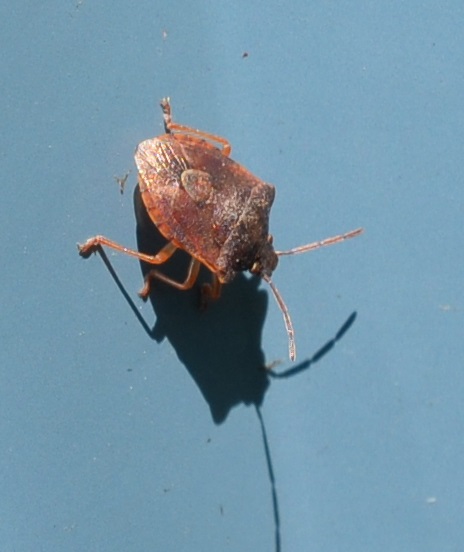
 4 29 15 2.jpg)
 4 29 15.jpg)
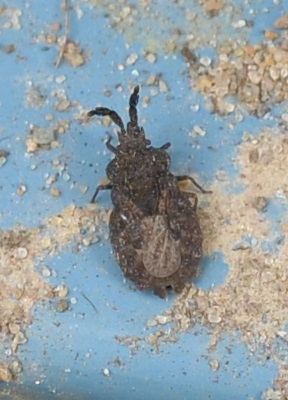
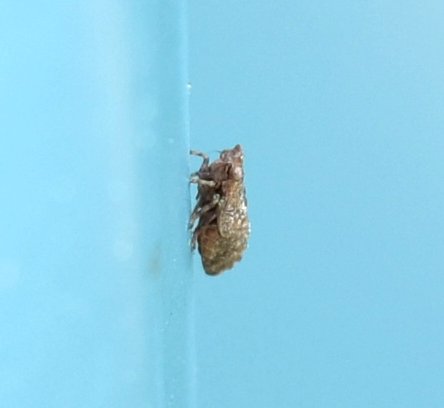
Oh dear. I was so happy to be able to show you the wings on the baby assassin bug. Then this morning this is what I found: I think it is a crab spider who
found him first. Life is rough out there. But this news is tempered by good news about the toads, later.
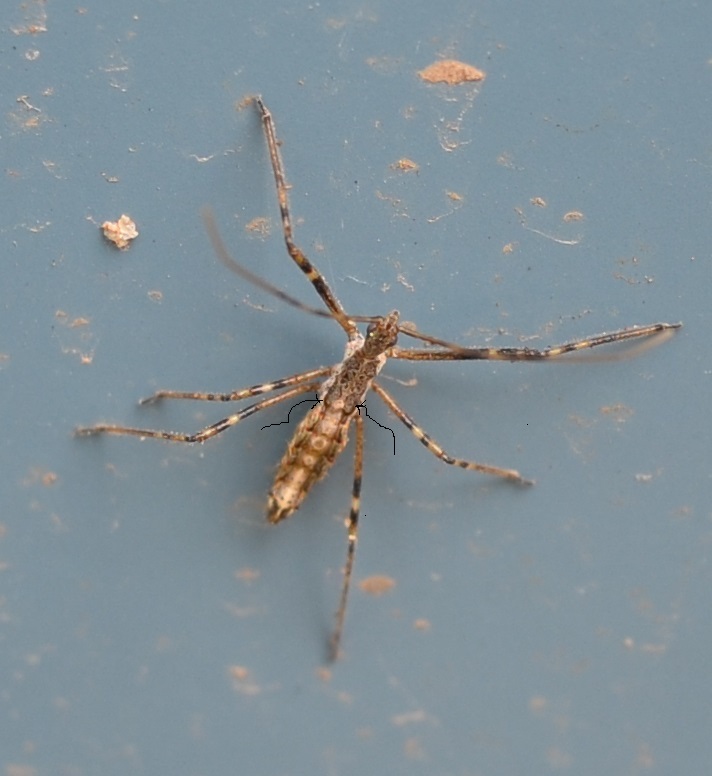
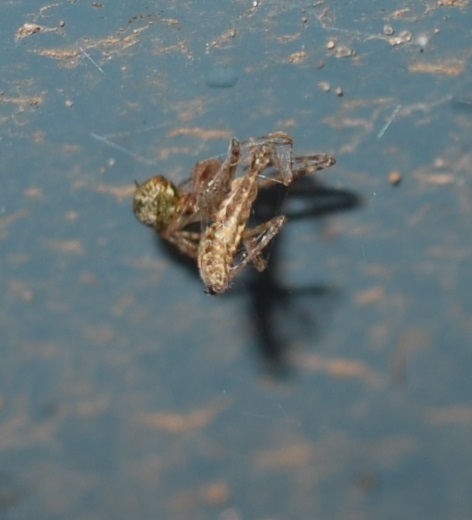
How about beetles? Here's our friend the northern pine weevil, wth his signature snout and its two twiggies. Also a click
beetle, unknown (by me), which actually did click when I moved it from the dark to get a better shot. Now a beetle that to
me looks a lot like one of those micro-organisms, the water bear or tardigrade. It seemed to be lumbering about but that is
just an impression. Almost as soon as I'd noted the ~ 7 mm black and the red turpentine beetles, I saw two under the size of
3 mm. Since they are all adults, ie, not grubs, I suppose they come in various sizes of adults and were two different species or
at least varieties.
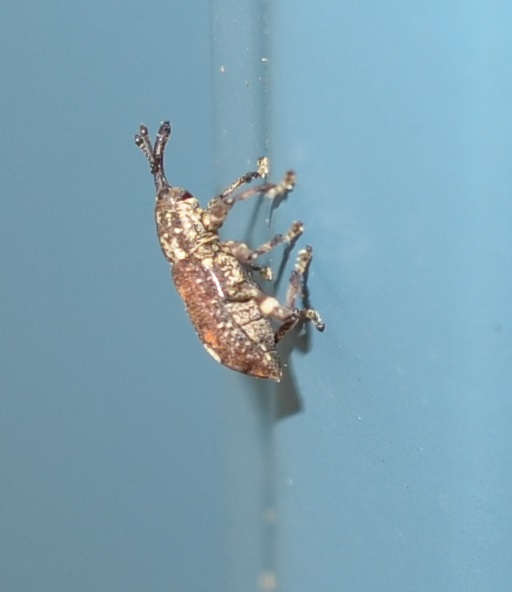
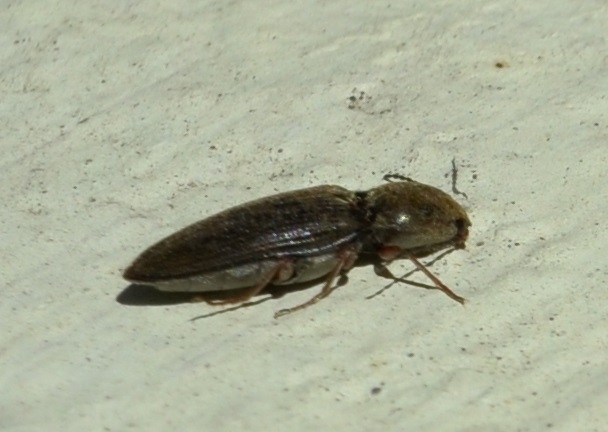
 5 3 15 2.jpg)
5 2 15 2.jpg)
Moving along alphabetically (somewhat), here's a picture of a simple little box made of canary wood. I had a thick piece (about an inch
thick) which a friend sliced down into a few thin boards, which I pieced into this box. I had to use scraps and scraps, including
putting together two thicknesses and two longitudinal views to bookmatch the two halves of a knot eye for the center
drawer front.
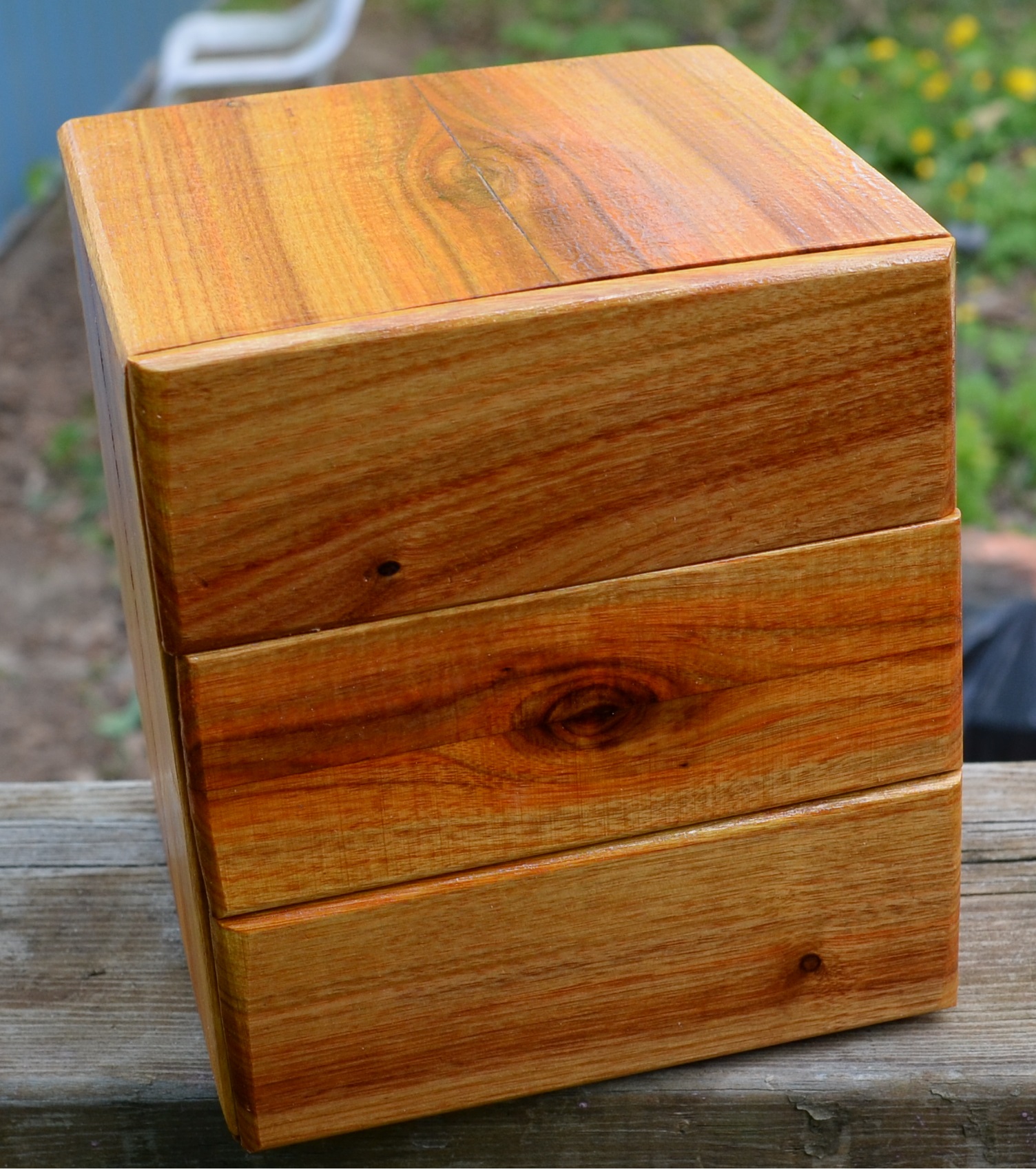
Now for the flies. For most people, me included, flies and spiders are an acquired taste. If you remember the pretty fungus
gnats from last week, you may have changed YOUR view of beauty or at least interestingness. First off, one that endeared
itself to me by standing still while I practised lighting and angle. Suillia is a shockingly pretty fly, hairy but a gorgeous
tangerine color. Now for the midge of the week: Male midges tend to have the fluffiest antennae of anything but a good
Saturniid moth. This one looked totally freaked out to have this huge organism hover over it with a humongous machine that flashed at it.
A midge with a lime-green butt and white wings? Then another unlikely midge.
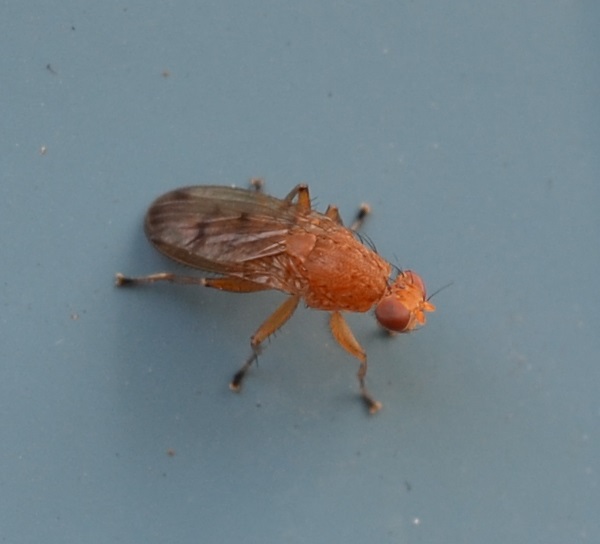
 -- Chironominae -- Tanytarsini 4 30 15 (2).jpg)
 4 30 15.jpg)
This first one is (we now know) a March fly. It was not going to stay around for another shot, but I think you can see how lovely it is. That yellow is probably pollen,
which means it is probably a flower-loving fly. Then the hover fly (which is the most camera-averse of all the hoverers) and about the size and colors of
a yellow-jacket. And two more unknown (to me) flies. One seems no worse for all the wear and tear on its wings. One seems to be playing hide-and-seek.
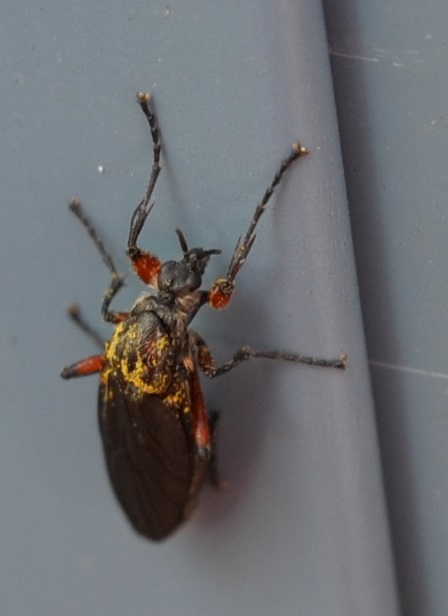
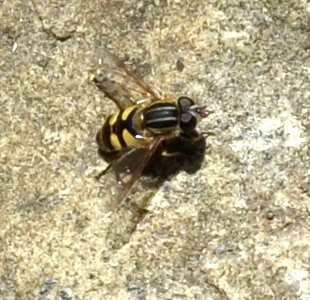
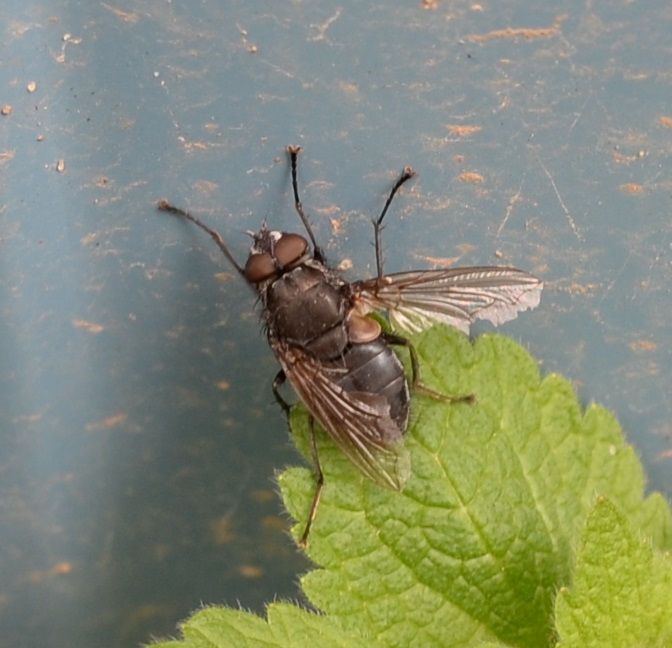
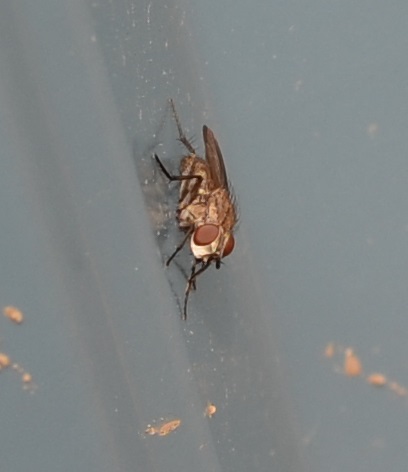
Only two hymenoptera this week. They take the form of a pop quiz. Which is the female and which is the male of these Braconid wasps Genus Earinus?.
 -- Agathidinae -- Earinus female 4 29 15.jpg)
 -- Agathidinae -- Earinus male 4 29 15.jpg)
But we do have a couple of representatives of the lacewing group (order Neuroptera): One is a sweet little lacewing, glowing gold in the sun. The other was a
striking white fluffy-looking Dustywings. The shape of the wing is similar across species, isn't it? By the way, do you remember the lacewing larva from
last summer? Remember how fond it was of its friend the red aphid?
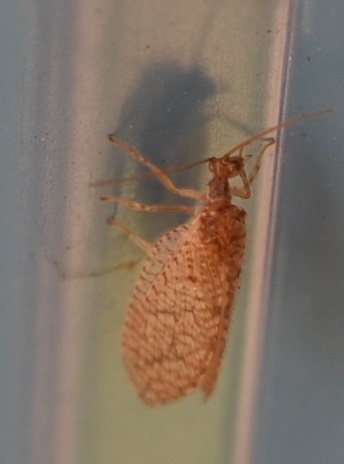
- lacewing family 4 30 15 2.jpg)
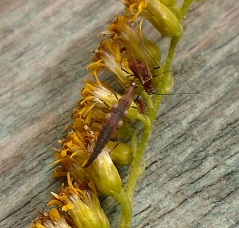
This odd-looking little "moth" has a name with a story. To get the story, got to
this bugguide page All about leaf blotch and other fascinating interplays between insects and plants. Whose eggs are those little orange
balls? I don't know. A lot of these things you don't know till you have seen them being laid.
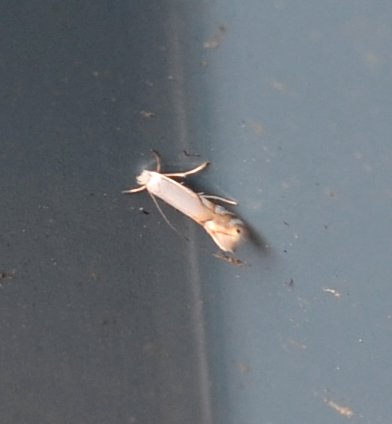
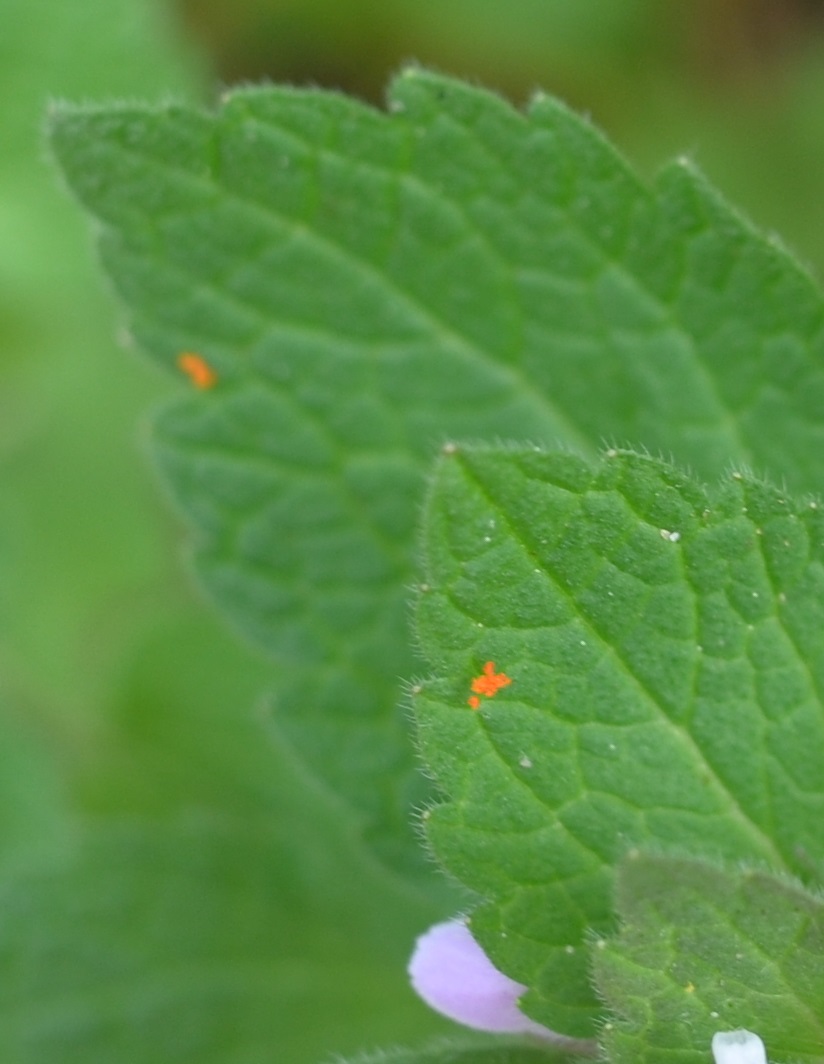
Just a few spiders this week. The first three are new to me - 2 mm across (not counting legs, which are very long) but each one distinct in marking from the
other.
.jpg)
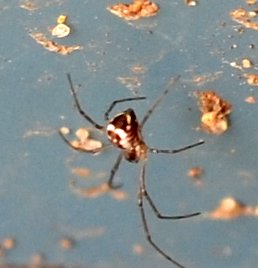
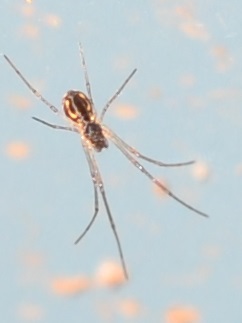
The third one in this row is another jumping spider, probably one of the large Phidippus genus. One characteristic of the jumpers is how they seem to be
fixing their big eyes on you. Here he is not willing to share his lunchies. Next is a common house spider shedding its skin, and then the little red velvet mite.
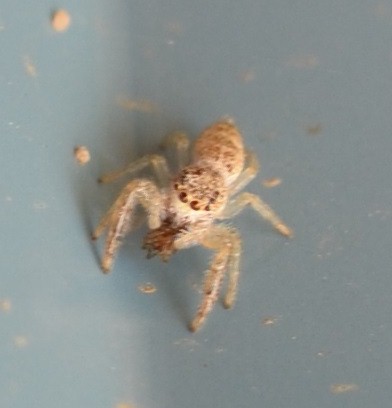
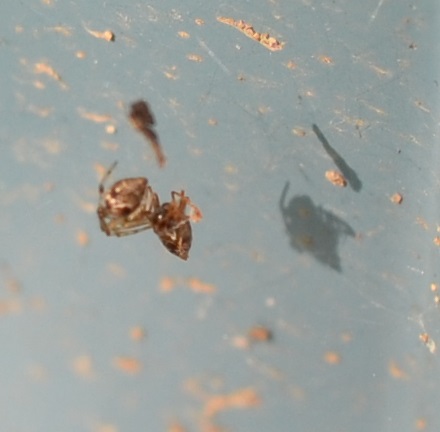
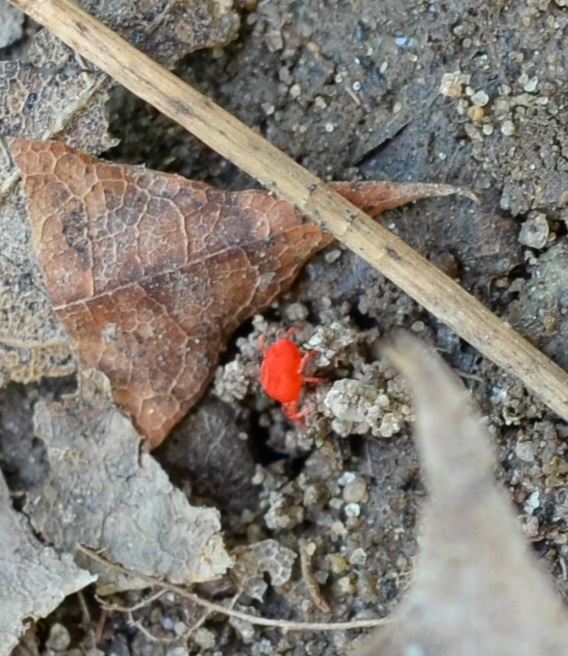
I'll leave you on the edge of your seat about this. Yesterday evening I heard the trilling of the toads. And this afternoon there was a pair mating in the pond.
There were also assorted other males, who seemed very confused about the whole thing. I will have to get up very early to see if I can scare off the raccoons who
killed so many toads last year. There are great strings of eggs that have already been laid. I think even if something hideous happens to the adults, there will be many hundreds
of tadpoles to amuse the fishes. So think about our toad family - they can use all the good wishes you can wend this way. Maybe the motion-sensor light will help this
year, but the other day I came out to find the pump lying on the ground out of the pond grinding and grinding away. It went right back to work once I cleaned out
the dead plant matter, but I need to go and turn off that pump right now! Oh rats, I can't resist one toad picture.
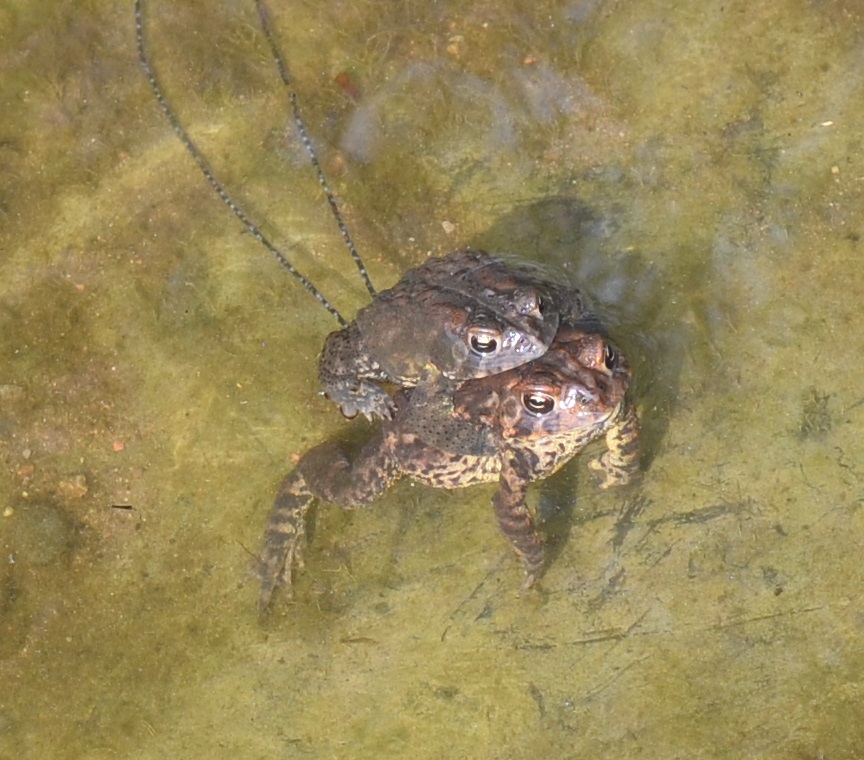
Goodbye till next time!
Back to April 28
On to May 10
Back to 2015 menu
Back to main menu








 4 29 15 2.jpg)
 4 29 15.jpg)






 5 3 15 2.jpg)
5 2 15 2.jpg)


 -- Chironominae -- Tanytarsini 4 30 15 (2).jpg)
 4 30 15.jpg)




 -- Agathidinae -- Earinus female 4 29 15.jpg)
 -- Agathidinae -- Earinus male 4 29 15.jpg)

- lacewing family 4 30 15 2.jpg)



.jpg)





